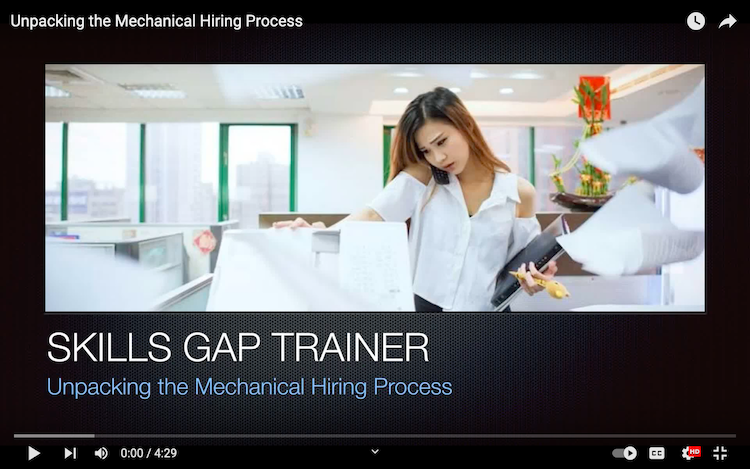In an era where technology permeates every aspect of our lives, the hiring process has not been spared. It has evolved from a highly manual, community-driven exercise to an automated process, leveraging the power of digital tools to sift through vast amounts of candidate data in relatively less time. This article aims to delve into the complexities and ramifications of this transformation while offering insights into the current state of hiring practices in North America.
Traditionally, the hiring process was relatively straightforward. Job seekers would peruse local newspapers and community boards for job listings, or network within their communities to discover potential placements. Unsolicited walk-ins to local businesses and factories were a common method of job hunting, and candidates would engage in face-to-face interactions with employers to discuss potential work opportunities.
This system was inherently human-centric and allowed a level of personal interaction that enabled employers to assess potential employees beyond their listed qualifications. The personal touch allowed an assessment of the candidate’s soft skills, perseverance, determination, flexibility, and suitability to the organization’s culture.
The rise of the internet and digital technology, however, brought a paradigm shift. Today, candidates can access a plethora of job opportunities through online job boards and company websites. This digital transformation has widened the geographic scope of job searches and has made it easier for candidates to apply for a higher number of jobs.
This surge in applications has led to an inundation of resumes for HR departments. To cope with the volume, many organizations have resorted to automated resume scanning software. While this technology allows companies to process a vast number of applications quickly, it often fails to capture the nuanced characteristics of a candidate that an experienced HR professional could discern. This shift towards mechanization, in many instances, has led to the sidelining of potentially suitable candidates, merely based on the absence of specific keywords or formatting elements in their resumes.
The proliferation of digital hiring tools has also impacted the structure of HR departments. With software doing much of the preliminary screening, many organizations have downsized their HR departments. This has led to a situation where the ‘human’ touch in Human Resources has become an ironic contradiction.
While the convenience and efficiency offered by digital tools in the hiring process cannot be overlooked, it is crucial to understand the nuances and potential drawbacks. The mechanical hiring process can lead to the loss of potentially valuable candidates who could have made a significant contribution to the organization’s success.
Furthermore, the reliance on algorithms and machine learning can foster an unintended bias in the hiring process. Such systems can perpetuate pre-existing biases if not properly managed and can limit diversity in hiring practices.
In essence, while the mechanical hiring process has undoubtedly increased efficiency and scalability in hiring, it comes with a set of challenges. There is an evident need for organizations to strike a balance between leveraging technology and retaining the human touch. This might involve using a hybrid approach where technology is used for initial screenings, but human judgment is applied for final decision-making.
As we move further into the 21st century, organizations must be cognizant of the pros and cons of mechanical hiring processes and strive to create systems that value both efficiency and human capital. The future of hiring lies in a balanced approach that melds the best of technology with the inherent advantages of human intuition and judgment.
Related books and resources:
“Recruiting in the Age of Googlization: When the Shift Hits Your Plan” by Ira S. Wolfe – This book provides insights into the changing landscape of recruitment and the impact of technological advancements on hiring practices.
“The Future Workplace Experience: 10 Rules For Mastering Disruption in Recruiting and Engaging Employees” by Jeanne Meister and Kevin Mulcahy – A comprehensive guide on navigating the new dynamics in the workplace and recruitment processes.
“The Talent Delusion: Why Data, Not Intuition, Is the Key to Unlocking Human Potential” by Tomas Chamorro-Premuzic – This book discusses the importance of using data over intuition in HR practices, including recruitment.
“Technology-Driven HR: How to Prepare for the Future of Work” by Louis Efron – A look at how technology is reshaping HR departments and hiring practices.
“Human Resources Management for Public and Nonprofit Organizations: A Strategic Approach” by Joan E. Pynes – Although focused on public and nonprofit sectors, this book delves into HR practices and the impact of technology.
“Artificial Intelligence for HR: Use AI to Support and Develop a Successful Workforce” by Ben Eubanks – This resource explores the application of AI in HR and how it can be leveraged to improve hiring processes.
“Data-Driven HR: How to Use Analytics and Metrics to Drive Performance” by Bernard Marr – A guide on how HR can use data to make better hiring decisions and improve organizational practices.
“The New Rules of Work: The Modern Playbook for Navigating Your Career” by Alexandra Cavoulacos and Kathryn Minshew – Offers insights into modern job searching and hiring practices.
“Work Rules! Insights from Inside Google That Will Transform How You Live and Lead” by Laszlo Bock – Though focused on Google, this book provides broader insights into innovative HR practices and the role of technology in hiring.
To see our Donate Page, click https://skillsgaptrainer.com/donate
To see our Instagram Channel, click https://www.instagram.com/skillsgaptrainer/
To see some of our Udemy Courses, click SGT Udemy Page
To see our YouTube Channel, click https://www.youtube.com/@skillsgaptrainer
